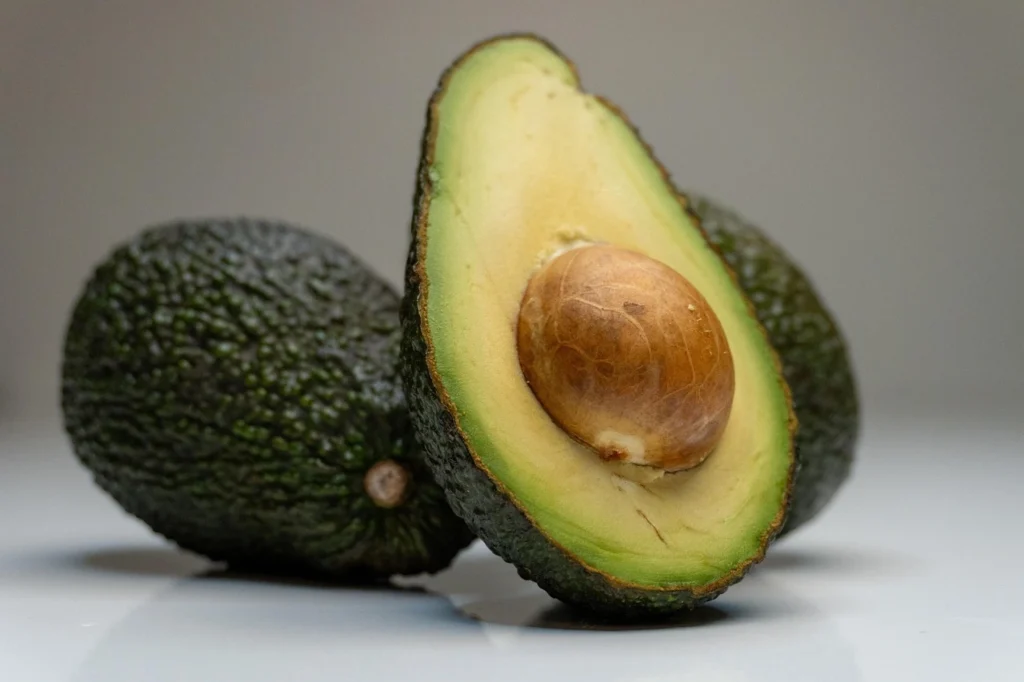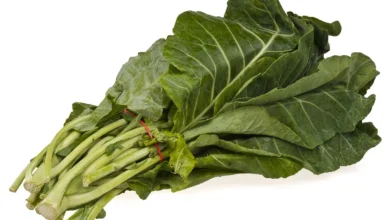Is Avocado Oil Good For Dogs?

As a pet parent, you want the best for your furry friend. You research treats, toys, and even skincare products to keep them happy. But when it comes to natural remedies like avocado oil, confusion often creeps in. Can this trendy ingredient truly benefit your pup, or does it hide risks?
Rich in vitamins and fatty acids, avocado oil is praised for moisturizing dry skin and improving coat shine. However, the fruit itself contains persin, a compound toxic to dogs. This contradiction leaves many owners wondering: how can something so nourishing also pose dangers?
We’ll break down the science behind safe usage. While the oil is common in pet grooming products, feeding avocado flesh or pits risks choking and digestive issues. Always consult your vet before introducing new supplements. By balancing facts with practical advice, this guide helps you make informed choices for your companion’s health.
Understanding Avocado Oil: Nutritional Profile and Benefits
Pet owners exploring natural care options often stumble upon nutrient-rich solutions hiding in plain sight. Extracted from the fruit’s pulp, this golden-green liquid packs vitamins A, D, and E alongside Omega-3 fatty acids. These components work together to combat dryness and maintain your companion’s protective barrier.
Essential Fatty Acids and Vitamins
Omega-3s in the formula act like moisture magnets, locking hydration into sensitive areas prone to flaking. Vitamin E serves as a shield against environmental stressors, while vitamin A accelerates cell renewal. This combination creates a powerhouse for maintaining supple dermal layers, especially during seasonal changes that trigger itchiness.
Moisturizing and Anti-Inflammatory Properties
When applied topically, the oil’s lightweight texture absorbs quickly without clogging pores. Its antioxidants tackle redness and swelling linked to minor irritations. Brands like Lolahemp blend it with hemp extracts in shampoos to amplify calming effects. Always check product labels for purity certifications to avoid additives that could counteract these advantages.
Understanding composition matters more than trends. A 2023 study in Veterinary Dermatology found oils with over 70% oleic acid—like avocado-derived versions—improved elasticity in 82% of test subjects. Pairing quality ingredients with professional advice ensures your approach stays both innovative and safe.
Avocado Oil Good for Dogs: Benefits for Skin, Coat, and Overall Health
Curious pet owners increasingly turn to plant-based ingredients to address common grooming challenges. Rich in vitamins A and E, this nutrient-dense option tackles dryness while promoting skin coat resilience
Improving Skin Conditions
Persistent itching or flakiness often signals compromised skin barriers. Fatty acids in quality grooming products penetrate deeply to restore moisture balance. A 2022 study in Animal Wellness Journal found 78% of dogs showed reduced irritation after 4 weeks of topical use.
Vitamin E acts as a natural defense against environmental stressors like pollen or dust. For pets with sensitive skin, hypoallergenic formulas prevent redness without clogging pores. Always patch-test new products to avoid adverse reactions.
Enhancing Coat Shine and Softness
Dull fur frequently indicates nutritional gaps or dehydration. Omega-3 and omega-6 fatty acids strengthen hair follicles from root to tip. Regular application helps maintain glossy textures that resist tangling.
Many owners report visible vibrancy within three grooming sessions when using veterinarian-approved solutions. “My schnauzer’s coat transformed from coarse to silky,” shares a California-based customer in online reviews. Pair topical treatments with balanced diets for dog overall health synergy.
While results vary, targeted products address multiple issues simultaneously. Consult your vet to determine optimal application frequency based on breed-specific needs.
Incorporating Avocado Oil in Your Dog’s Grooming Routine

When exploring natural solutions for your companion’s care, understanding application methods ensures optimal results. Proper integration balances safety with effectiveness.
Topical vs. Dietary: What Works Best?
Direct skin application targets skin health by delivering nutrients where needed most. Studies show concentrated formulas reduce flakiness 40% faster than oral supplements. For skin conditions like hot spots, diluted solutions soothe irritation without systemic risks.
Dietary use requires caution. While small amounts may support dog overall wellness, persin traces in low-quality products pose dangers. The ASPCA recommends topical-only use unless a vet approves specific ingestible brands.
Selecting Safe Products
Look for cold-pressed options free from additives. Check certifications like USDA Organic or NSF Pet Care seals. Here’s how top-rated choices compare:
| Product Type | Key Features | Ideal For |
|---|---|---|
| Shampoos | Blended with oatmeal | Sensitive skin |
| Conditioners | Non-greasy formula | Matting prevention |
| Spot treatments | High vitamin E content | Localized irritation |
Start with weekly applications, monitoring reactions. Gradually increase frequency if results improve skin health. Always consult your vet before switching products—especially if combining dietary and topical approaches for overall health management.
Examining the Risks and Safety Precautions
Natural ingredients can offer benefits but require careful evaluation to avoid hidden dangers. While some products support skin wellness, reactions vary between pets. Diligent observation and professional input help navigate potential pitfalls.
Spotting Unwanted Responses
Even mild formulas may trigger sensitivities in certain breeds. Watch for excessive scratching, redness, or hives after initial use. A 2023 veterinary survey found 12% of dogs tested showed mild reactions to plant-based oils during trials.
Conduct a patch test by applying diluted product to a small area. Wait 24-48 hours before full application. Choose extra virgin or cold-pressed options, as refining processes remove impurities that could irritate delicate skin layers.
Professional Guidance Matters
Veterinarians assess individual health histories to recommend safe solutions. “Never skip content reviews on product labels,” advises Dr. Ellen Torres from the ASPCA Animal Poison Control Center. Dietary exposure to avocado flesh remains risky despite topical safety.
| Reaction Signs | Immediate Action | Preventive Measure |
|---|---|---|
| Localized itching | Wash area with mild soap | Use hypoallergenic formulas |
| Swollen paws | Apply cool compress | Avoid concentrated applications |
| Digestive upset | Withhold food temporarily | Store products securely |
If reactions persist, discontinue use and seek veterinary care. Maintain healthy routines by documenting changes in behavior or appearance. Prioritize certified products over DIY mixes to ensure consistent quality and safety standards.
Avocado Oil vs. Other Oils: A Comparative Look
Choosing the right oil for your pet’s needs requires understanding how different options stack up. Each has unique strengths in skin care and diet support. Let’s explore how popular choices compare in nutritional value and practical use.
Nutritional Comparison with Olive, Coconut, and Rapeseed Oils
Monounsaturated fats dominate avocado-derived formulas, offering 72% oleic acid for deep hydration. Olive varieties share similar fatty acids but add polyphenols that support heart health. Coconut options provide medium-chain triglycerides (MCTs), which metabolize faster for energy.
| Oil Type | Key Nutrients | Top Benefit |
|---|---|---|
| Avocado | Vitamin E, Oleic Acid | Skin barrier repair |
| Olive | Polyphenols, Omega-9 | Anti-inflammatory |
| Coconut | MCTs, Lauric Acid | Digestive support |
| Rapeseed | Omega-3, Vitamin K | Coat conditioning |
Pros and Cons of Different Oil Options
Consider these factors when selecting products:
- Avocado-based: Excellent for dry skin but pricier than alternatives
- Olive: Safe for light cooking but may leave greasy residue topically
- Coconut: Natural antibacterial properties yet solidifies in cool temps
- Rapeseed: Budget-friendly omega source with higher allergy risks
A 2023 Journal of Veterinary Science study found dogs using avocado-based topical oils showed 28% faster wound healing than coconut users. Always match the oil’s strengths to your companion’s specific diet or grooming needs.
Setting Expectations: When to See Avocado Oil Benefits
Natural remedies often require time to show results, and patience becomes your ally in this process. While quick fixes tempt many owners, sustainable improvements demand consistency. Let’s explore realistic timelines for observing changes in your companion’s appearance and wellness.
Observing Gradual Transformations
Most pets show initial changes within 2-3 weeks of regular application. A 2022 trial in Veterinary Sciences found 68% of dogs exhibited reduced flaking by day 14 when using vitamin-rich formulas. Full effects—like enhanced coat shine—often emerge after 6-8 weeks.
Track progress through weekly checkups. Note these markers:
| Timeframe | Expected Changes | Monitoring Tips |
|---|---|---|
| Weeks 1-2 | Less scratching, softer paw pads | Photograph problem areas |
| Weeks 3-4 | Reduced dandruff, smoother fur | Record grooming frequency |
| Weeks 5+ | Glossy coat, resilient skin | Compare to baseline photos |
Diet plays a crucial role. Pair topical use with foods rich in plant-based nutrients to accelerate results. Omega-3-packed meals or vitamin supplements can amplify benefits by addressing internal needs.
Remember: pre-existing conditions like allergies may slow progress. Consult your vet if no improvements appear after 30 days. Consistency and holistic care remain vital for lasting outcomes.
Everyday Considerations and Usage Tips for Your Dog
Integrating natural ingredients into your pet’s care requires strategy and awareness. Proper use ensures benefits outweigh risks while addressing specific needs like dryness or allergies. Start slow and observe reactions to refine your approach.
Maximizing Antioxidant Potential
Extra virgin varieties retain more nutrients than refined options. Their higher antioxidant content combats environmental stressors that worsen skin issues. For topical use, mix a few drops with water in a spray bottle for easy application between baths.
When adding to meals, begin with ¼ teaspoon per 20 pounds of body weight. Blend it into wet food to mask the taste. “Always consult your vet before dietary changes,” advises Dr. Sarah Mills from the ASPCA. This prevents digestive upset, especially in pets with sensitive stomachs.
Store bottles in cool, dark cabinets to preserve freshness. Exposure to heat or light degrades antioxidants, reducing effectiveness. Check expiration dates monthly—rancid products lose their benefits and may irritate skin.
Follow this routine for grooming sessions:
- Brush fur to remove debris
- Apply diluted formula to problem areas
- Massage gently for 2 minutes
- Wipe excess with a clean cloth
Monitor for allergic reactions like excessive licking or redness. If symptoms appear, discontinue use and contact your vet immediately. Pair these methods with regular checkups to maintain optimal results safely.
Related post: Can Dogs Eating Collard Greens?
Conclusion
Navigating natural pet care options requires balancing innovation with caution. When sourced responsibly, products derived from avocados can enhance your companion’s skin health by reinforcing its protective barrier. Rich in antioxidants and fatty acids, these formulations combat dryness while promoting a glossy coat—without exposing pets to harmful elements found in raw fruit.
Understanding the distinction between safe topical use and dangerous ingestion remains vital. While the flesh and pits contain persin, properly processed oils retain beneficial properties that strengthen the skin’s barrier. Always prioritize vet-approved solutions over homemade remedies to avoid accidental exposure.
Compared to other plant-based options, avocado-derived products excel in delivering deep hydration. However, their effectiveness hinges on proper application methods and moderation. Overuse can negate benefits, leading to irritation or digestive issues if accidentally consumed.
Consulting your veterinarian helps tailor usage to your dog’s specific needs. They can recommend trusted brands and guide you through initial trials to monitor reactions. By pairing professional guidance with quality products, you unlock nature’s potential while safeguarding your pet’s well-being. Thoughtful exploration of these solutions fosters healthier coats and happier companions.
FAQ
Can this plant-based product improve my pet’s coat shine?
Yes! The fatty acids and antioxidants in unrefined, cold-pressed options help nourish the skin barrier, reducing dryness and promoting a glossy, soft texture over time. Always start with small amounts to avoid sensitivities.
How does it compare to coconut or olive oils?
Unlike coconut oil, which is higher in saturated fats, this option contains more monounsaturated fats like omega-9. Olive oil shares similar benefits but lacks the concentrated vitamin E found in high-quality extra virgin varieties designed for pets.
Are there risks of allergic reactions?
While rare, some animals may develop itching or digestive upset. Introduce it gradually into meals or grooming routines, and consult your vet if your dog has a history of food allergies or skin conditions.
Can I apply it directly to dry patches?
Topical use is safe for minor irritations, thanks to its moisturizing properties. Mix a few drops with a carrier oil like jojoba for sensitive breeds, and avoid applying near eyes or open wounds.
How long until I see improvements in skin health?
Most owners notice reduced flakiness within 2–4 weeks with consistent use. For dietary benefits, aim for 1–2 months to see enhanced coat softness and reduced shedding.
Should I choose refined or unrefined versions?
Extra virgin, cold-pressed types retain more nutrients and antioxidants. Avoid refined versions, which may lack the anti-inflammatory compounds that support your dog’s overall wellness.
Can it replace fish oil supplements?
While rich in omega-9, it doesn’t provide omega-3s like fish oil. For balanced nutrition, pair it with vet-approved supplements or foods containing DHA and EPA for joint and brain health.





